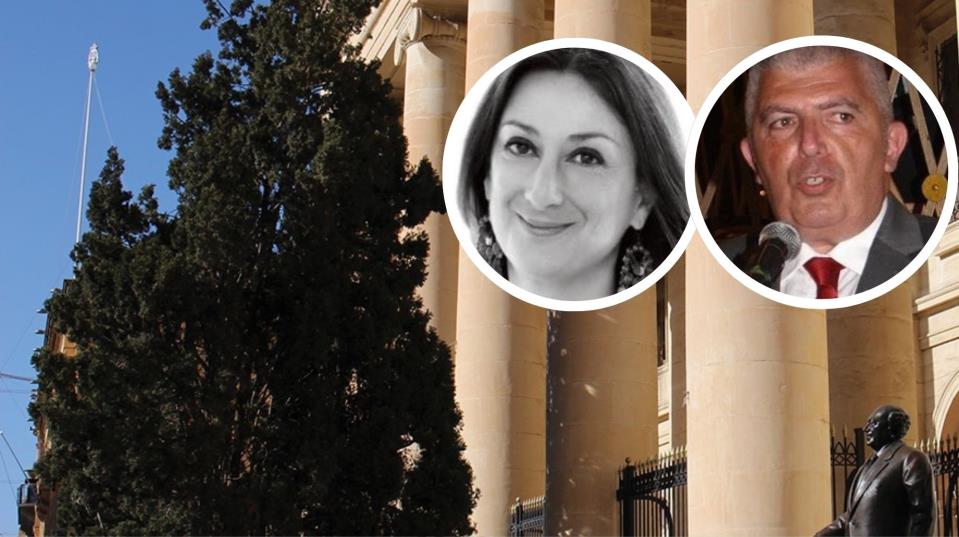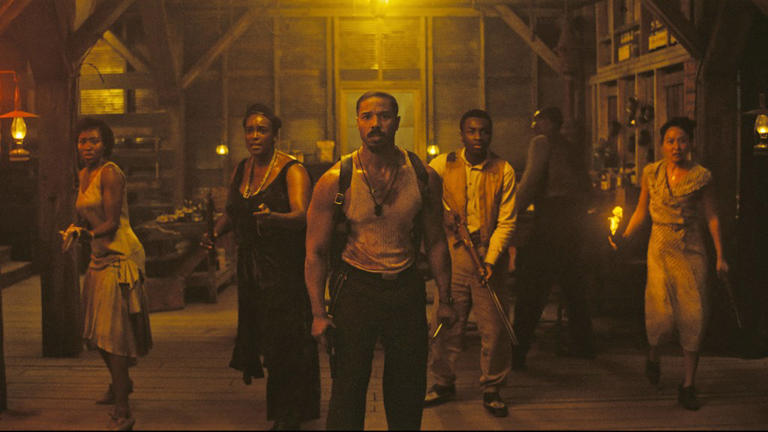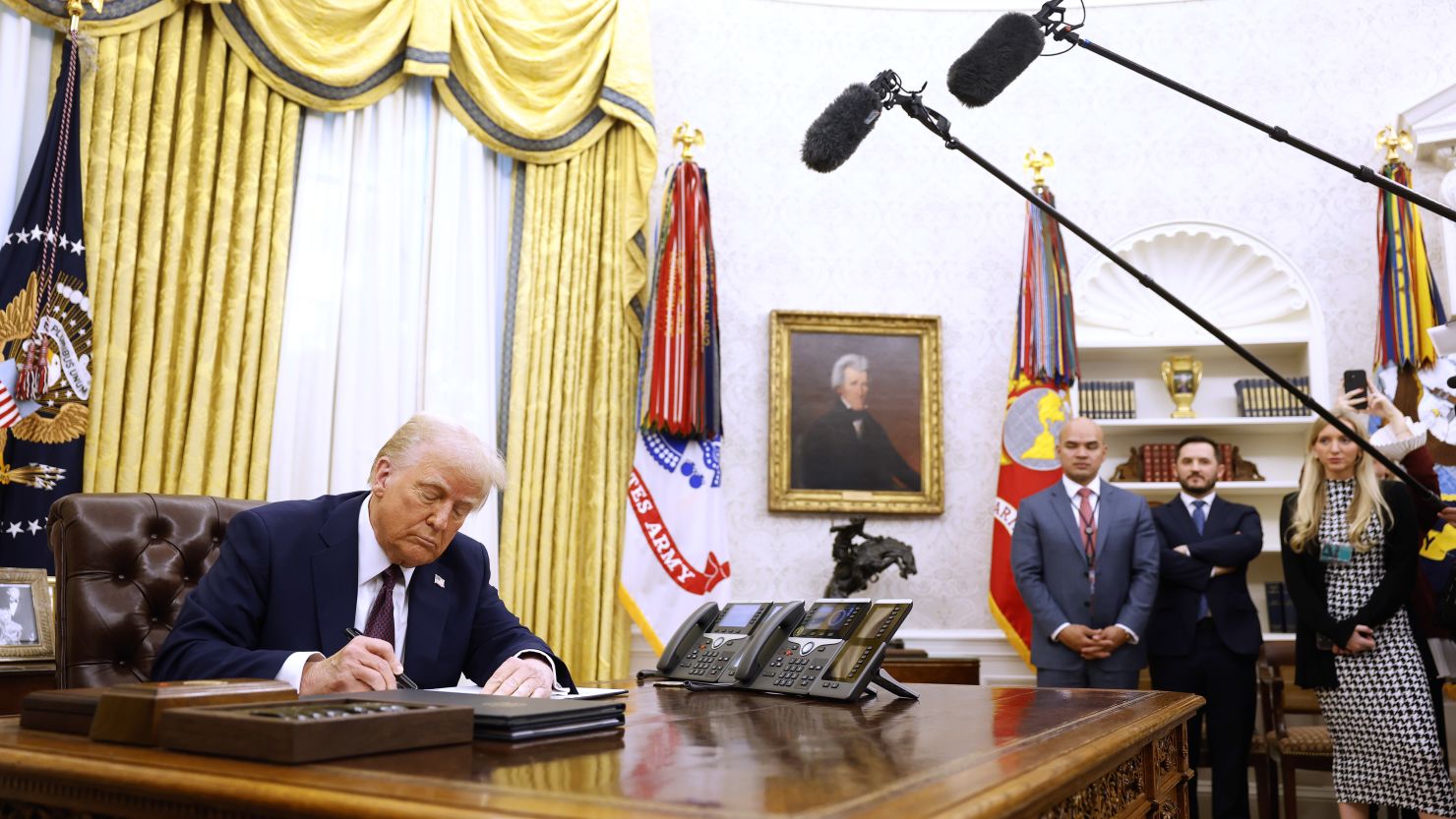
The trial by jury of the four men accused of murdering Daphne Caruana Galizia and lawyer Carmel Chircop continues on Monday.
The accused are brothers Robert and Adrian Agius, known as the ‘Ta’ Maksar’ brothers, along with Jamie Vella and George Degiorgio.
This is the fourth day of jury proceedings. So far, jurors heard prosecutors and witnesses describe the moment that Caruana Galizia’s car went up in flames.
One witness told jurors that he noted suspicious activity in the weeks before the murder. He kept seeing a white leased car in the area. He saw it leaving after the explosion on the day of Caruana Galizia’s death, and never saw it again.
Judge Edwina Grima is presiding over the trial.
Prosecutors Godwin Cini, Danika Vella and Anthony Vella are representing the attorney general’s office.
The defence lawyers are Nicholas Mifsud for Adrian Agius, Ishmael Psaila and Amadeus Cachia for Jamie Vella, Alfred Abela and Rene Darmanin for Robert Agius, and Noel Bianco and Leslie Cuschieri for George Degiorgio.
Jason Azzopardi and Therese Comodini Cachia are assisting the Caruana Galizia family, while Vince Galea is assisting the Chircop family.
18:02: Lawyer Ishmael Psaila asks to make a point of law. The jurors leave the courtroom.
First, he insists that the witnesses should make a distinction between an opinion and a fact, although the judge responds that a court-appointed expert is free to do so.
Second, he says the court needs to make it clear with the jurors that they are deciding on two separate inquiries. It is one jury dealing with two different homicides.
The jurors come back into the courtroom, and the judge reminds them that only two of the four accused are being charged with involvement in the murder of Daphne Caruana Galizia. She recommends that they label the documents accordingly so that, down the line, they don’t get confused as to which evidence belongs to which case.
17:29: Cross-examination
Lawyer Amadeus Cachia is asking the witness about the farmhouse, where Jamie Vella had been found and arrested. Cachia asks the witness about the land being owned by the government but used by Vella’s family. The witness has no idea about this. Cachia then asks whether the area was accessible to the public, but the witness says it looked like a private residence.
He steps off the witness stand and his testimony ends there.
17.16: Bullet marks nearby
The next report is about a raid conducted at a farmhouse in Mosta, on the other side of the Bidnija valley. The police points out that they found bullet marks on the side of a skip at this residence, which appeared empty. The farmhouse itself also looked deserted from the photos.
Among the items found in site was a multimeter. The police explains that this is a generic tool.
16:57: Plenty of flight tickets
One photo shows a wad of boarding passes found at the garage, as well as the passport, ID card and driver’s licence of Adrian Agius.
The inspector describes another search in an apartment at St Paul’s Bay and shows the jurors photos of the interiors.
16:42: A pistol and four bullets
A police sergeant is testifying next. He was asked to conduct a search in a garage in Żebbuġ. Among the items seized during the search were a pistol and four bullets. The inspector is showing the jury several photos of cash, bank cards, pen drives and other items of relevance found on site.
16:26: Another inspector explains the DNA tests carried out. He had been tasked with taking oral swabs from Alfred and George Degiorgio. He says that he followed all the required safety procedures and placed the swabs in a secure package for a court-appointed DNA expert to analyse.
16:10: One particular police official has been testifying all day. He had been in charge of photographing all the evidence. His testimony is still ongoing. He’s now explaining a report he drafted with photos of evidence collected. No fingerprints were found on these items.
The police official explains that fingerprints are the result of friction, but there are plenty of factors, such as humidity or whether an object was underwater, that affect whether or not a print is left on an object.
16:02: A member of the jury asks why the cars searched were not sealed. A police official explains that there was no need to seal the vehicles because everything of forensic relevance to the police had been taken.
The three police officials leave the courtroom—their testimony is over.
15:56: Police also searched two boats in the area, belonging to the Degiorgio brothers, and a nearby garage. A gun was found in one of the garages. Several items were photographed and seized from the places and taken in as evidence.
Another search was carried out on a car belonging to Vince Muscat, but nothing of forensic relevance was seized. The car was sealed with security tape.
Police officials are showing the jurors photos of the searches and items seized.
15:39 The same group of police officials from earlier is continuing their testimony. They’re showing photos of a BMW to the jury. The car had been searched by the police during the potato shed raid.
Underwater searches also led the police to discover several mobile phones. They were recovered from the seabed near the potato shed by the AFM.
15:24 The court is back in session, and it seems that the defence wants to minute something connected to an earlier testimony. The testimony could not be reported on the orders of the court, and so the defence’s argument cannot be reported either.
13:03: The court is suspending the session for a two-hour lunch break. We will continue with our live reporting at 3pm.
12:59: A police official is showing the jurors photos of the entry into the potato shed as well as the interiors. A kitchenette and gym equipment can be seen in some of the photos.
The police are being detailed in their explanation of the forensic methodology used. For example, the police official has just mentioned that they first focus on DNA collection to avoid contaminating the crime scene. The same caution is exercised when collecting fingerprints, which is always collected after taking DNA samples.
“You might have a piece of evidence from which it is possible to collect two types of evidence. Take a mobile phone for example–there could be saliva near the microphone, sweat near the speaker, and fingerprints on the screen and back. In such a case, you have to decide which evidence is most important and most reliable.”
12:46: Three more police officials are testifying. These officials carried out searches at various places of interest, including the potato shed in Marsa. Alfred Degiorgio, Vincent Muscat and George Degiorgio were on the site of the crime and arrested.
The official is describing the day that police raided the potato shed. The raid happened around a month after Caruana Galizia’s murder.
Among the pieces of evidence seized was a burnt mobile phone was found near the shed in a pile of debris.
12:28: The Dutch forensics institute had asked the police to collect samples from the crime scene to check for any residue from the explosion. Samples were collected from a nearby field and from a lamp post across the road from the initial explosion.
The samples were taken to the Netherlands by police officials. At no point in the delivery were the samples passed on to a third party. Even when they arrived in the Netherlands, the police officials were taken through a VIP area as an added security measure. It was only when they arrived at the institute themselves did the police pass on the samples to the investigators.
12:18 The report, written by the NFI, contained an analysis of the mobile phone that was used to trigger the explosion. The inspector is showing the jurors photos of the evidence bag.
The next witnesses are a police sergeant and warrant officer.
12:13 The same constable will continue testifying but with an inspector. More documents are being shared with jurors and lawyers.
The inspector describes having received a package from the Netherlands Forensic Institute. The police went to this institute for help with the forensic investigations on the wreckage.
The package contained a sealed envelope with the institute’s report and an evidence bag. Everything was opened in the presence of a court-appointed expert and the inquiring magistrate.
11:52 The constable is testifying about a report he drafted. This report consists of details about the original make of the car gathered from the company it was being hired from. Caruana Galizia had been renting the car at the time of the explosion.
By analysing the original make of the car, police officers were able to understand which pieces of evidence were part of the original make, and which parts might have been part of the explosive. Photos of the car are being shown to jurors but are not visible from the balcony.
11:42 The session is starting again, with the first police constable from earlier testifying for a second time today.
10:55 Jurors are being given a short break. We will be back with our reporting at around 11:30am.
10:53 Photos of metal scraps are being shown to the jury. These scraps were found among the evidence and considered particularly relevant for further analysis by the court expert.
After showing the jury all the relevant photos, they step away from the witness stand. Their testimony is over.
10:40 The police are ready with their testimony. Next up is another dual testimony, this time from a police sergeant and constable. Documents are again being shared around with relevant evidence for the testimony.
These officials were tasked with reopening the evidence from the crime scene and from Caruana Galizia’s vehicle so that they can be analysed with the court-appointed expert. This happened in November 2017.
10:29 The police official explains that ‘sharpeners’ were used to ensure that the bomb would cause maximum damage. These sharpeners will be explained later in the hearing.
After days of work on the wreckage, the experts were eventually able to find the exact location of the explosion.
10:22 The testimony is getting technical. The prosecution is asking them to explain how the items seized were categorised.
More photos of the car damage are being shown. Soot-covered metal, gaping holes and other signs of severe damage are clearly visible in the photos. The court-appointed expert on the case had indicated to prosecutors that the bomb appeared to have been placed beneath the driver’s seat.
10:09 The police official is describing the search on the car that Caruana Galizia was driving at the time of her murder. The car was placed in a garage after the police went on site and seized certain items. Members of the AFM helped search and dispose of any explosives.
Photos of the car are being shown to the jury. The first set of photos is of the front door of the garage where the car was kept. It was locked and sealed by the police as a precaution. The next photos show the car covered in plastic, but clearly damaged.
09:54 Two police constables will be testifying together at the witness stand. Documents are being passed to the jurors, defence team, parte civile and prosecution.
09:39 The session is starting without the jurors present. The first witness is the CEO of the Correctional Services Agency. Most of his testimony cannot be published on the order of Judge Edwina Grima, who is presiding over the jury.
09:14 Good morning and welcome to the fourth day of proceedings in the jury trial of ̌Robert and Adrian Agius, known as the ‘Ta’ Maksar’ brothers, along with Jamie Vella and George Degiorgio. All four are accused of the voluntary homicide of lawyer Carmel Chircop, and either direct involvement or complicity in the car bomb explosion that killed journalist Daphne Caruana Galizia. All except Adrian Agius are also accused of unlawful possession of explosives and firearms.
A nine-person jury, made up of six men and three women, is hearing the case.
Today’s sitting was scheduled to start at 9am, but it seems that there are some technical issues preventing them from starting on time.












